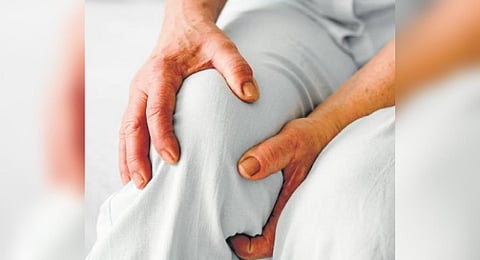

CHENNAI: Rheumatoid Arthritis (RA) stands as the most prevalent inflammatory joint ailment, frequently mistaken for osteoarthritis. It is a condition that is by no means uncommon. Unlike osteoarthritis, RA is an autoimmune disorder, and if left untreated, it can result in enduring joint deformities, potentially affecting vital organs such as the eyes, lungs, and heart.
Although no definitive cure for RA exists, the timely inception of pharmacological therapies and lifestyle adjustments upon early detection can significantly mitigate its impact. Disease-modifying medications play a pivotal role in restraining the progression of RA and similar inflammatory rheumatic conditions. However, the accessibility and availability of these medications remain in question. In India, the provision of drugs to treat RA presents a pertinent issue necessitating a multifaceted intervention.
Prevalence of RA in India
It is worth noting that despite being classified as a non-communicable ailment, inflammatory rheumatic diseases exhibit comparable prevalence, mortality implications, and comorbidities akin to other Non-Communicable Diseases (NCDs) and disorders.
The estimated prevalence of RA in India falls within the range of 0.3% to 0.75%. Given that 60% of the country’s population consists of adults, the projected number of individuals afflicted with RA in India totals 36 million.
Challenges
The socioeconomic dynamics in India are intricate, spanning from lower-middle income groups to the upper-middle class. Beyond the financial costs and availability of therapies, an array of additional concerns necessitates attention, encompassing the requirement for enhanced qualified support and monitoring.
Factors like perceptions of the ailment, adherence, misconceptions regarding therapy, and peer pressure significantly influence the adoption of RA treatment strategies.
The pursuit of cost-effective RA treatment, coupled with the availability of appropriate medications, poses challenges both globally and particularly within India. Moreover, middle-income countries, including India, confront obstacles tied to the accessibility and provision of RA treatments. These hurdles obstruct entry to novel RA medications and in some instances, conventional therapeutic approaches.
Treatment cost
The total expenditure associated with RA treatment varies in line with the therapy recommended by the treating physician, factoring in the severity of the patient’s condition. However, even with the most minimal therapeutic approach, monthly costs for patients range from D6,000 to D18,000. This encompasses drug-related expenses, consultation fees, laboratory tests, X-rays, and ophthalmological evaluations.
Given that 15% of RA patients grapple with one or more comorbidities, regular check-ups hold paramount importance in ensuring effective RA management. Furthermore, the chronic nature of RA presents enduring financial challenges for patients. Collaborative endeavours and interventions encompassing various stakeholders, hospitals and pharmaceutical entities are essential to mitigate this.
The considerable financial strain imposed by medication costs, combined with the unavailability of quality drugs, exacerbates the hurdles in RA treatment. Affordable RA treatment will be a game changer in a developing country like India for effective RA management.